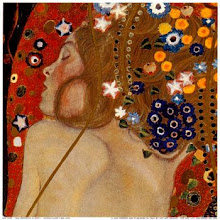Part of the Places of a Lifetime series from Traveler magazine, National GeographicTurkish television shows often feature Kuzguncuk’s rows of colorful 19th-century wooden houses “to evoke a sense of old Istanbul.”—Kathy Hamilton, culture reviewer, TimeOut Istanbul. South of the Bosporus Bridge on the Asian shore, this small fishing village has a multiethnic minority history, home to Greeks, Jews, and Armenians. Tour its green valley, a gentrifying enclave dotted with galleries and workshops of artists, architects, and craftspeople. Take a ferry to transportation hub Üsküdar, then a five-minute minibus ride to Kuzguncuk.

Just before you arrive on the Bosporus shore is (1) Fethi Ahmet Paşa yalı (Çarşı Caddesi), the 18th-century wooden mansion of the Ottoman ambassador to Paris, a son-in-law of Sultan Abdulmecit. The estate’s former grounds are now the forest preserve on the right. Ask to disembark at Kuzguncuk’s main intersection, where you will see the (2) 1792 marble fountain at the quay.

Continue up the shore road, Çarşı Caddesi, toward the Bosporus Bridge. On the right is the 1835 domed (3) Surp Krior Lusarovich Armenian Orthodox Church (Karakoy, Sakizcilar Street 3). The 1880 (4) Üryanizade Mescit (Çarşı Caddesi 24) is up ahead, unusual for its carved wooden minaret. Turn right at the next corner onto Üryanizade Sokak, a street lined with lovingly restored and brightly painted (5) Ottoman houses.

Two blocks ahead is İcadiye Caddesi, the shaded main street of barbershops, tea houses, cafés, and art galleries. Turn left and walk two blocks to the (6) Greek Orthodox Church of St. Panteleimon (Tuyan Sokak 28), built in the sixth century during the reign of Emperor Justinian. “One of the city’s oldest churches still in use,” says Hamilton. Visit during Sunday services to see the ayazma, or sacred spring, left of the gate. Rigorous detour: Much farther east up İcadiye, continue up the hill on Kuzguncuk Dere Sokak, and then walk a long block ahead to the hairpin turn on your left and the (7) Jewish Cemetery (Dereboyu Caddesi). One of Istanbul’s largest, the cemetery has served the community for almost 500 years.

Cross İcadiye Caddesi and turn right on Bostan Sokak, a lane with a tea garden, art gallery, and, on Wednesdays, street vendors selling cheese, produce, spices, and handicrafts. Turn right at Tufan Sokak. At the top of the hill, a wooden door with a cross marks the entrance to the (8) Greek cemetery. If the gate’s not open, knock and the caretaker will let you wander the grounds.
Returning to İcadiye Caddesi, to the west before the traffic light on the right is
(9) Ayios Georgios monastery and church (İcadiye Caddesi), built in 1821. A few steps later, a Victorian-era door leads to
(10) Beth Yaakov Synagogue (İcadiye Caddesi 9), built in 1878, worshipping spot for the Judeo-Spanish community. To view its dome paintings of Israel, arrange a visit through the Chief Rabbinat.
(c)Daha Başka - http://dahabaska.blogspot.com/
 Kuzguncuk İskelesi’ne yaklaşırken vapurdan ilk göreceğiniz mekanlardan biri olan İsmet Baba yıllardır süregelen tecrübesiyle İstanbul’un en iyilerinden biri. İsmet Baba 1951 yılında "Yalı Gazinosu" olarak başlamış. 70’li yıllarda restorana dönüştürülen mekana adını veren İsmet Baba 81 yılında ölmüş. Ancak çocukları babalarının ismiyle bu mekanı yaşatmışlar.
Kuzguncuk İskelesi’ne yaklaşırken vapurdan ilk göreceğiniz mekanlardan biri olan İsmet Baba yıllardır süregelen tecrübesiyle İstanbul’un en iyilerinden biri. İsmet Baba 1951 yılında "Yalı Gazinosu" olarak başlamış. 70’li yıllarda restorana dönüştürülen mekana adını veren İsmet Baba 81 yılında ölmüş. Ancak çocukları babalarının ismiyle bu mekanı yaşatmışlar.

















